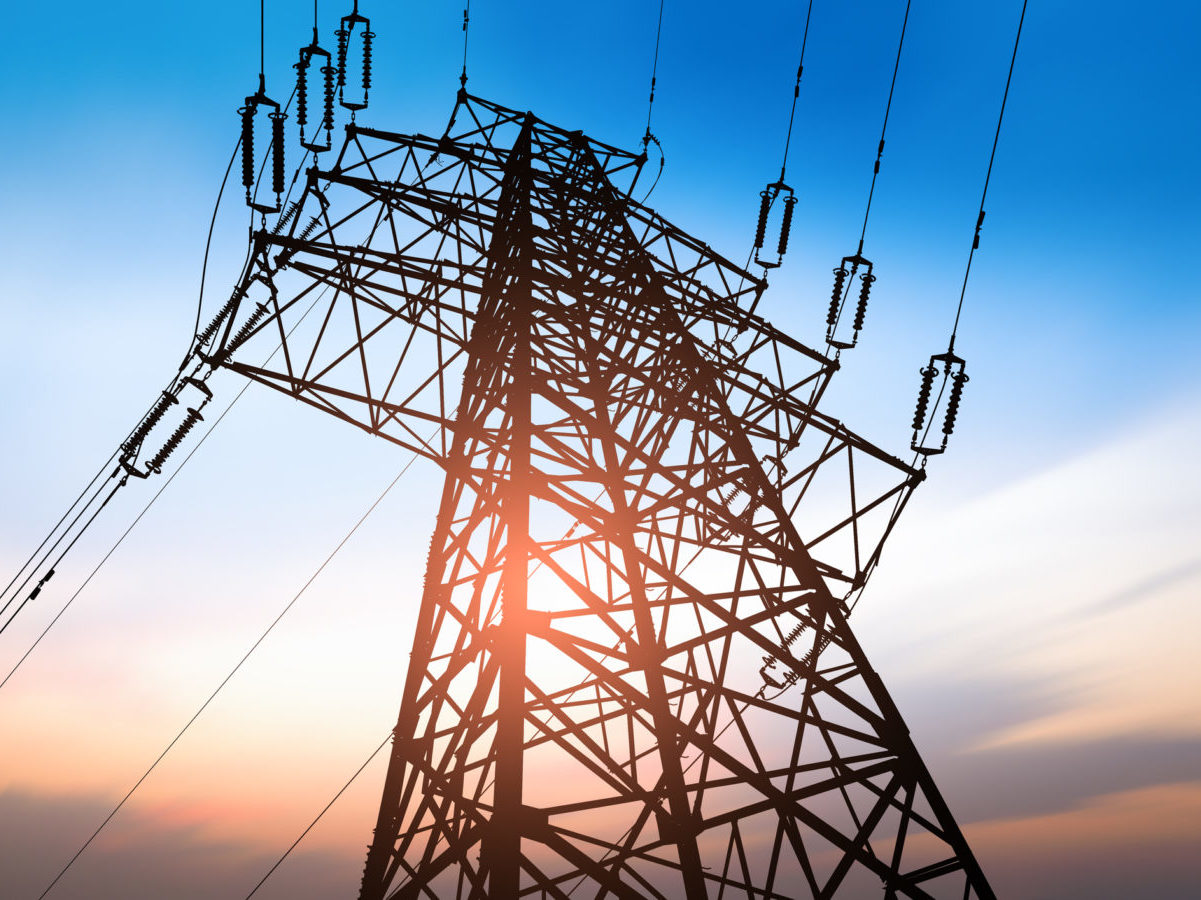
With a spotlight on analytics and DER, it’s important to remember that advanced analytics capabilities in support of optimal operation of centralized generating facilities and the Bulk Electric System (BES) connecting them are vital areas of recent utility investments.
It is natural that more attention has been given to DERs, given the disruptive nature of these resources, compared to central generating facilities, which have been around for ages. But BES and DERs are not in a state of opposition to one another; they are vitally linked, as are the advanced analytics capabilities optimizing their operation.
The linkage between centralized and distributed forms of power generation stems from the economic value of DERs being largely dependent upon their interconnection to a reliable BES. Yet, as more DERs come on board, the burden they place on the BES increases, speaking from an electric asset perspective as well as from an advanced analytics perspective.
New utility-scale capacity installations on the BES are not only keeping pace with the rate of installation of DERs—they are exceeding it by a large margin. For example, while residential solar PV installations have involved the addition of more than 2GW annually in 2015, 2016, and 2017 (specifically 2.099 GW, 2.583 GW and 2.227 GW respectively, per Statistica data), ten times more utility-scale Natural Gas Fired Combined Cycle capacity is being added in the March 2018 to February 2019 time. Below is a list of the most recent data from the April 2018 Energy Information Administration’s Monthly Electricity Outlook:
| Generation Technology | Nameplate Capacity (MW) | % of Total |
| Natural Gas Fired Combined Cycle | 20,332.7 | 58.8% |
| Onshore Wind Turbine | 5,841.7 | 16.9% |
| Utility-Scale Solar Photovoltaic | 4,531.0 | 13.1% |
| Natural Gas Fired Combustion Turbine | 2,876.5 | 8.3% |
| Natural Gas Internal Combustion Engine | 445.7 | 1.3% |
| Conventional Hydroelectric | 150.3 | 0.4% |
| Batteries | 125.8 | 0.4% |
| Other Waste Biomass | 86.4 | 0.3% |
| All Other | 65.1 | 0.2% |
| Petroleum Liquids | 32.4 | 0.1% |
| Other Natural Gas | 30.6 | 0.1% |
| Wood/Wood Waste Biomass | 17.5 | 0.1% |
| Conventional Steam Coal | 17 | 0.09% |
| Landfill Gas | 4.2 | 0.02% |
| Natural Gas Steam Turbine | 1 | 0.005% |
| Grand Total | 34,557.9 | 100.0% |

Source: Statistica
Noteworthy advanced analytics capabilities associated with the BES include power generation monitoring systems, transmission and substation asset health solutions, as well as better probabilistic models and simulations for facility critical parts supply chain, maintenance, and contingency planning. A wide range of advanced analytics tools are used to address increasingly higher levels of complexity. Among the sources of this increased complexity are: challenges associated with DERs, plant retirements, increases in severe weather events, cyber and physical security vulnerabilities, aging generating assets, and capital constraints. These challenges must be addressed while also supporting ongoing goals of safe and economical dispatch and operation, as well as providing estimates of risk associated with optimizing facilities and assets.
Large U.S. electric utilities are making multi-million dollar investments annually in associated areas, not only in more advanced software, communications, and control systems, but also in associated analytics capabilities. Fine-tuning these capabilities helps to decrease downtime during planned outages of large generating facilities, for example, yielding multi-million dollar savings. Even though significant efficiency improvements associated with predictive maintenance and asset health have been enjoyed in the past, the state of the art continues to improve. Ongoing improvements are associated with new applications of advanced analytics tools, including machine learning and artificial intelligence to analyze real-time data from sensors monitoring key operational parameters for predictions associated with plant equipment, as well as increasingly sophisticated planning capabilities and more detailed supply chain tracking of critical spare parts.
Consider the power sources involved in upcoming planned utility-scale generating unit additions in the U.S. for the March 2018 to February 2019 period.
Among the application areas of interest, significant bottom-line benefits are associated with improving predictive maintenance for power generating facilities. Machine learning and the use of sensor data for better modeling come to bear, and are now being deployed to predict failures with greater and greater reliability. In addition, the ability to fine-tune supply chain functions to ensure timely availability of spare parts associated with planned and unplanned outages also yields significant O&M value and financial benefits.
A recent report by the North American Reliability Corporation (NERC) provides details regarding the use of deterministic and probabilistic analyses for identifying and mitigating BES reliability risks, and related plans to invest in new analytical capabilities in support of NERC’s BES goals. NERC also runs the industrywide all-hazards exercise known as GridEx. (See the November 21, 2017 T&D World article, “More Than 6,000 Utility, Government Officials Tested Grid Security During GridEx IV Exercise.”) The exercise simulates industrywide cyberattacks and helps utilities test companywide and industrywide response-and-recovery processes.
NERC’s scope of oversight is extensive, per this excerpt from their 2018 Budget:
- Propose, support the development of, monitor compliance with, and enforce mandatory reliability and security standards for the North American BES, subject to regulatory oversight and approvals from FERC in the U.S. and applicable authorities in Canada;
- Conduct near-term and long-term reliability assessments of the North American BPS;
- Certify BPS operators as having and maintaining the necessary knowledge and skills to perform their reliability responsibilities;
- Maintain situational awareness of events and conditions that may threaten BPS reliability;
- Coordinate efforts to improve physical and cyber security for the BPS of North America;
- Conduct detailed analyses and investigations of system disturbances and unusual events as well as measure ongoing system trends to determine root causes, uncover lessons learned, and issue relevant findings as advisories, recommendations, guidelines, and essential actions to the industry to mitigate and control risks to reliability; and
- Identify and prioritize risks to reliability and use a broad toolkit to mitigate and control risks to reliability, including the potential need for new or modified reliability and security standards, improved compliance monitoring and enforcement methods, or other initiatives.
Source: North American Electric Reliability Corporation: 2018 Business Plan And Budget Filing (page 2).
NERC’s ongoing work for system analysis of the North American grid is a great example of the importance of cooperation between a wide range of companies and agencies with similar advanced analytics business drivers and goals. Along with NERC’s responsibility for standards and policies associated with physical and cyber Critical Infrastructure Protection (CIP), and its role leading the annual GridEx cyber security exercise, the organization also is responsible for the Reliability Assessment and System Analysis (RASA) Program, assesses the reliability and adequacy of the BES “to provide insight and guidance about reliability risks.”
NERC’s RASA team also supports the following objectives of interest to many in the electric utility advanced analytics community (excerpted from page 48 of the NERC 2018 Business Plan and Budget Filing):
- Continue leading and improving NERC’s analytical capabilities to address a broad range of engineering topics,
- Support NERC Reliability Standards development with subject matter expertise,
- Support and lead technical analysis of emerging risks requiring advanced analytics and
- interconnection-wide assessment,
- Detailed forensic analysis of significant system disturbances
Key focus areas:
- PMU Measurement, use, and analysis improvements
- Synchrophasor technology
- Power plant model verification
- Oscillation analysis
- Frequency Response Analysis, Interconnection Frequency Response Obligation Analysis, and
- forward-looking reliability assessment
- Interconnection-Wide system inertia study
- Interconnection-Wide short circuit ratio assessment
- Interconnection-Wide Model Building Designation and Criteria administration
- Interconnection-Wide model validation
- Improving model quality and fidelity
- Load and distributed energy resource modeling
- Event analysis – simulation and forensic analysis of major events
- Reliability Standards support
- BES Exception and Self-Determined Notification Processing
Further, RASA will continue to work closely with other organizations, including but not limited to the Electric Power Research Institute (EPRI), the Department of Energy (DOE), the Institute of Electrical and Electronic Engineers (IEEE), the Institute of Nuclear Power Operations (INPO), the North American Transmission Forum (NATF), the North American Generation Forum (NAGF), and the Canadian Electricity Association (CEA). RASA collaborates with these groups on a number of fronts, including geomagnetic disturbance (GMD), vegetation management, and variable generation integration. RASA will continue working with the Interstate Natural Gas Association of America (INGAA) and the Natural Gas Supply Association (NGSA) regarding studies pertaining to the interdependency of gas and electric systems.”
Source: North American Electric Reliability Corporation: 2018 Business Plan And Budget Filing (Page 48).














